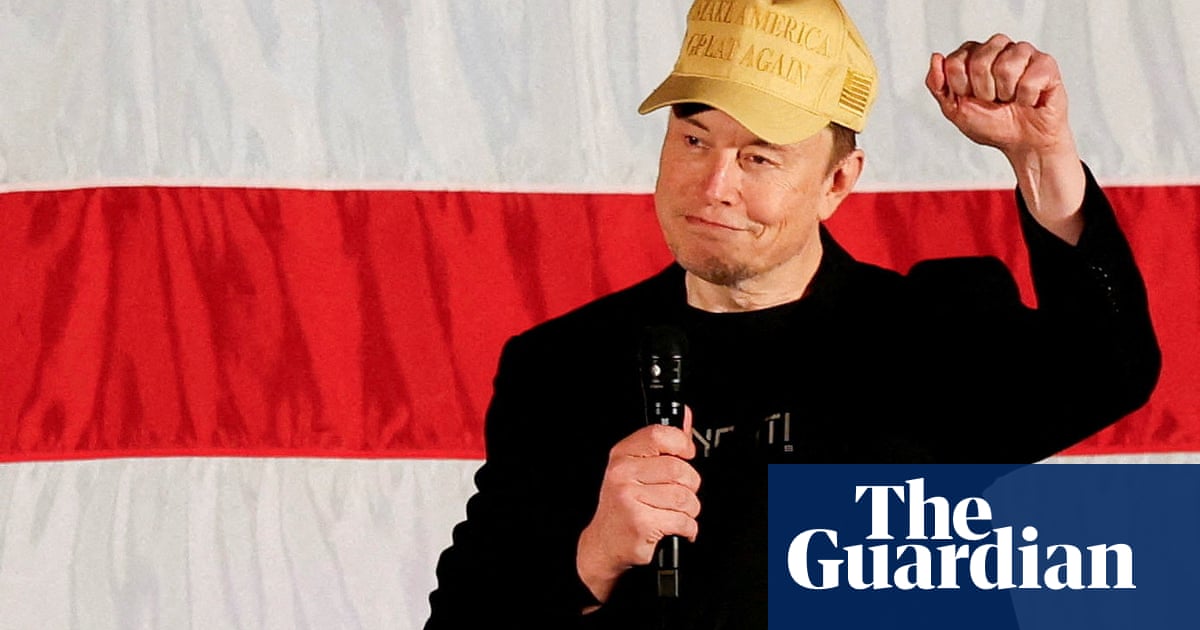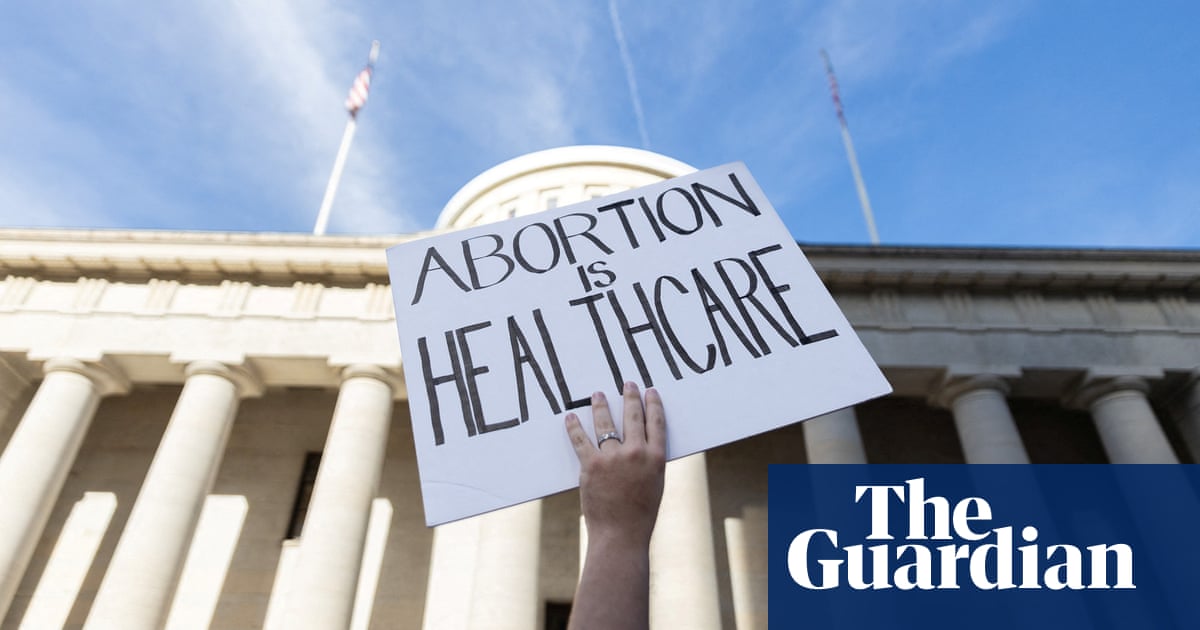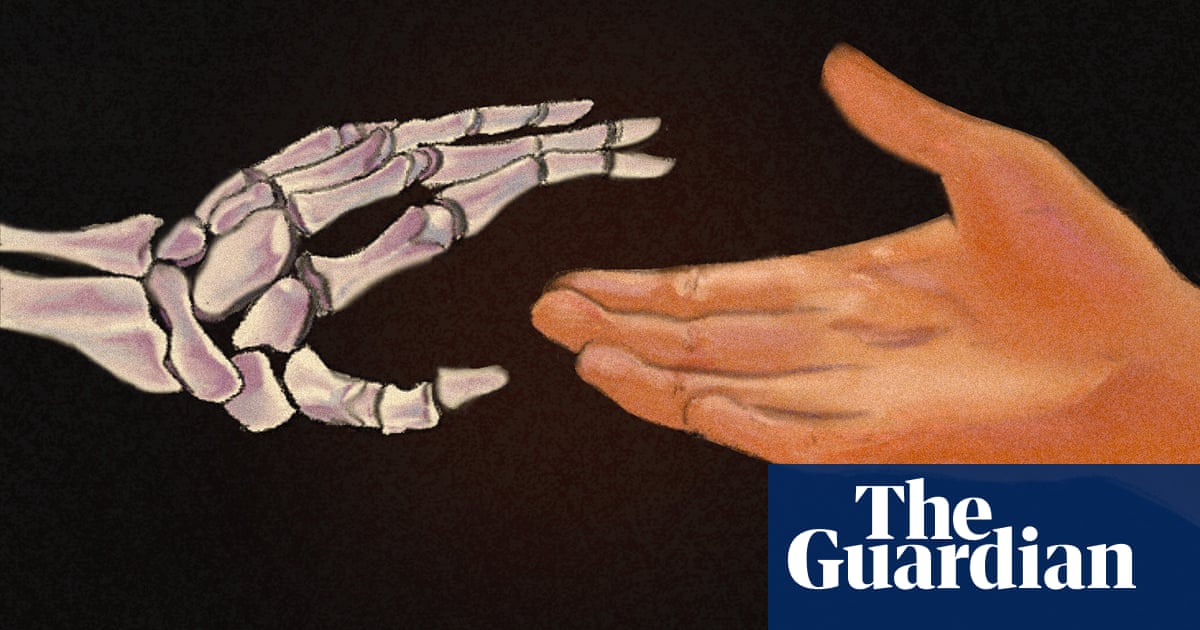Photograph: Sergio Moraes/Reuters
AstraZeneca âsaid it could cut UK jobsâ if biodiversity drug levy is introduced | AstraZeneca
AstraZeneca has said it may cut jobs at its UK operation if the government enforces a global push to make companies share profits derived from natureâs genetic codes, multiple sources have told the Guardian.
The alleged comments from the company came amid a concerted lobbying push by the pharmaceutical industry against the profit-sharing measures.
Sources told the Guardian that the British-Swedish biotech company â which made $5.96bn (£4.59bn) profit last year â made the comments during a Department for Environment, Food and Rural Affairs roundtable meeting last week to discuss a proposed new global levy on drugs derived from the digital forms of biodiversity. A spokesperson for AstraZeneca denied the comments were made by their representative.
The genetic codes of nature â which, when stored digitally, are known as digital sequence information (DSI) â are playing a growing role in new drug development in the pharmaceutical and biotech industries.
But there is widespread anger among biodiverse countries about how DSI is being used by multinational companies to develop commercial products â almost always for free. Most of the worldâs remaining biodiversity is concentrated in poorer countries. They argue that the free use of this genetic information amounts to âbiopiracyâ, and say companies should share profits when indigenous species are used to develop commercial products.
Global leaders have already agreed in principle that these benefits should be shared more fairly. They are now gathered in Cali, Colombia, at the biodiversity Cop16, in negotiations over what form that sharing should take.
Ideas under consideration include a 1% global tax on profits of goods derived from DSI, which could cost the Cambridge-based company as much as $60m if enforced by the UK government [that figure represents an estimated maximum, as not all of the firmâs profit would be derived from DSI].
The profit-sharing proposals have prompted significant backlash from pharmaceutical companies. In March, AstraZeneca announced a £650m investment in its UK operations, including £450m for its vaccine research and manufacturing facility in Liverpool. According to sources present at last weekâs meeting, however, a representative for the company said jobs in north-west England could be affected by any levy.
Quick Guide
What is Digital Sequence Information and why are countries fighting over it?
Show
What is DSI?
Samples of natural organisms have been collected for scientific research for a long time. Now, their genetic codes are often most useful to researchers. This information is mostly exchanged online, via huge databases that store digitised versions of genetic codes. This is known as Digital Sequence Information, or DSI.
Why is it valuable?
Many important scientific discoveries, including treatments for diseases like Alzheimers and cancer, are drawn from natureâs genetics. The reaction that powers Covid-19 tests, for example, was developed using heat-resistant bacteria from a Yellowstone geyser. Because much of this genetic information is digitised, itâs used by scientists, companies, and huge AI models that search for potential new drug discoveries, proteins and materials that could one day be worth billions.
Whatâs the conflict?
Most of the undiscovered biodiversity that could generate new discoveries lies in poorer countries – places like the vast rainforest of the Congo basin. Many of those countries object to companies and researchers using their native biodiversity without paying for it: they call it âbio-piracyâ. At the Cop16 UN biodiversity summit in October 2024, world leaders are attempting to negotiate an agreement over the sharing of resources from DSI.
Without a global agreement on how revenue is shared from discoveries based on DSI, some countries have threatened to restrict access to their biodiversity â potentially a major blow for commercial and scientific research. Proceeds from the global fund would be used for nature conservation around the world in an effort to prevent the continued destruction of ecosystems.
Eva Zabey, chief executive of Business for Nature, said making progress on DSI at the Cop16 negotiations was essential.
âNature underpins every aspect of our economy. The benefits of natural resources â including through digital sequencing â must be valued and shared fairly. Businesses have a responsibility to contribute financially and non-financially for their use of these resources,â she said.
While any DSI levy would be voluntary, governments are free to implement compulsory national measures, an approach that is under consideration by the UK government.
At the Defra meeting on 15 October, pharmaceutical industry representatives voiced strong opposition to the idea and said a compulsory levy would damage competitiveness with countries such as the US, which is not a signatory to the UN biodiversity process and would not introduce any levy.
Richard Torbett, chief executive of the Association of the British Pharmaceutical Industry, who attended the Defra meeting, said the imposition of a compulsory levy for UK-based companies was âa poorly targeted and damaging response to a critical global challengeâ.
âIt would discourage the use of this vital data, stifling British research efforts into vital to public health concerns,â he said.
âAny multilateral benefit-sharing mechanism must promote conservation objectives alongside scientific innovation and economic growth. The proposals on the table at Cop16 for a compulsory levy do not achieve this.
âThey will have a direct impact on UK innovation, investment and growth, made worse by the fact that key nations such as the US will not impose a levy, putting the UK at an active disadvantage in attracting cutting-edge medical research,â he said.
Ahead of the negotiations in Cali, the International Federation of Pharmaceutical Manufacturers & Associations (IFPMA), said it had âserious concernsâ about a proposed global DSI tax, and that it could further complicate research.
Steve Bates, chief executive of the UK Bioindustry Association, said: âAny rules or levies that come from this summit will be imposing barriers to innovation and business growth ⦠We have already discussed this with the UK government delegation going to Colombia.â
International DSI negotiations at Cop16 are expected to conclude on Friday next week.
A spokesperson for AstraZeneca said it may be the case that others in the room at the meeting on 15 October who represent the industry may have made comments about the impact on companies.
âI can confirm that no AstraZeneca representative made threats to move operations or cut jobs. As a company we are aligned with the position set out by the IFPMA which can be found here,â they said.
US warns against âprotractedâ campaign in Lebanon as Israel strikes Beirut | Israel
Israeli strikes hit Beirut on Thursday evening, after the US warned against Israel being led into a âprotractedâ campaign in Lebanon and efforts got under way to hold renewed talks over a ceasefire and hostage deal in Gaza.
Lebanese state media said several strikes hit Beirutâs southern suburbs on Thursday, about half an hour after Israel issued evacuation warnings for the Hezbollah bastion after intense strikes the night before.
In the south of the country, an Israeli strike killed at least three media staff staying at a guesthouse where several other reporters were staying, Lebanese media said.
A month into Israelâs military assault on Iranian-backed Hezbollah, US secretary of state Antony Blinken said he hoped Iran was getting a clear message that any further attacks on Israel risked its own interests. Israel has vowed retaliation for an Iranian missile barrage on 1 October.
Israel unleashed its Lebanon offensive with the declared aim of securing the return of tens of thousands of people evacuated from homes in northern Israel during a year of cross-border hostilities with Hezbollah.
âAs Israel conducts operations to remove the threat to Israel and its people along the border with Lebanon, we have been very clear that this cannot lead, should not lead, to a protracted campaign,â Blinken said in Doha on his 11th trip to the region in the last year.
Blinken said the US was working on a diplomatic deal which would allow civilians on both sides on the border to return to their homes. Later, the head of Israelâs military said an end to the conflict with Hezbollah now looked possible.
âIn the north [of Israel], thereâs a possibility of reaching a sharp conclusion. We thoroughly dismantled Hezbollahâs senior chain of command,â Lt Gen Herzi Halevi said in a video statement.
Blinken is set to meet with Lebanese prime minister Najib Mikati in London on Friday, as well as with the foreign ministers of Jordan and the United Arab Emirates, two key US partners in a postwar plan for Gaza, the state department said.
US and Israeli negotiators will gather in Doha to prepare for renewed talks on a Gaza ceasefire deal which would also entail release of hostages in the Palestinian territory, Qatar and Washington said on Thursday.
Israel said its Mossad intelligence agency head David Barnea will travel to Doha on Sunday to try to restart talks, and meet with CIA director William Burns and Qatarâs prime minister.
âThe parties will discuss the various options for starting negotiations for the release of the hostages from Hamas captivity, against the backdrop of the latest developments,â the office of Israeli prime minister Benjamin Netanyahu said.
Hamas senior official Osama Hamdan told pro-Iranian channel Al Mayadeen there was no change in the groupâs position. âThe hostages held by the resistance will only return by stopping the aggression and completely withdrawing,â Hamdan said.
Previous attempts to reach a Gaza ceasefire and hostage release deal have failed.
Blinken, who held talks with Qatarâs prime minister, has been on his first trip to the region since Israel killed Hamas leader Yahya Sinwar, a mastermind of the groupâs 7 October 2023 attack on Israel that triggered conflict across the Middle East.
Washington, Israelâs close ally, has expressed hope his death can provide an impetus for an end to the fighting.
With Reuters and Agence France-Presse
LA district attorney recommends resentencing for Menéndez brothers | Los Angeles
George Gascón, the Los Angeles county district attorney, has recommended that the Menéndez brothers be resentenced for the 1989 killings of their parents, a step that is expected to lead to their release.
Gascón said during a news conference on Thursday that the pair should be resentenced, and that life without the possibility of parole be removed, after the office reviewed new evidence in the case. They will be eligible for parole immediately because of their ages at the time of the murder, he said.
âAfter a very careful review of all the arguments made ⦠I came to a place where I believe that, under the law, resentencing is appropriate and Iâm going to recommend that to a court tomorrow,â Gascón said.
A judge will have the final say in a case during a hearing next month.
The development is a major victory to the brothers and their supporters who said that they killed their parents in self-defense after years of sexual, physical and psychological abuse by their father. Prosecutors had argued that they were driven by greed and a desire to inherit a multimillion-dollar fortune.
Gascón said he believed the brothersâ account of abuse. âI do believe the brothers were subjected to a tremendous amount of dysfunction in the home, and molestation,â he said.
âThey have been in prison for nearly 35 years. I believe that they have paid their debt to society.â
Erik and Lyle Menéndez were convicted in 1996 for the murders of their parents, José and Kitty. The violent killing of the prominent entertainment executive and his wife in Beverly Hills attracted international attention and drew renewed interest in recent years thanks to a new Netflix show and documentary series.
During the pandemic, the case reached a new audience thanks to viral TikTok videos that offered a more sympathetic view of the brothers and created a new network of supporters. Kim Kardashian has become an advocate for the brothers, and argued in a recent essay that the case is more complex than it appears and that Erik and Lyle âchose what they thought at the time was their only way out â an unimaginable way to escape their living nightmareâ.
The district attorney highlighted the brothersâ behavior in prison. Since they were first incarcerated, they have earned college degrees and served as mentors and caregivers in prison.
âEven though they didnât think they would ever be let free, they engaged in a journey of redemption and a journey of rehabilitation,â Gascón said.
Cousins of Erik and Lyle spoke at Thursdayâs press conference and praised the district attorney for his action, describing it as a âday filled with hopeâ for the family.
after newsletter promotion
âThis decision is not just a legal matter â it is a recognition of the abuse my cousins endured,â said Karen VanderMolen, Kittyâs niece.
Gascón had announced earlier this month that his office would review new evidence and decide whether the case should be considered for resentencing or a new trial. The new evidence included a letter written by Erik before the killings that his attorneys say corroborates his account of sexual abuse as well as allegations from a former member of the boy band Menudo who said that José Menéndez had sexually abused him.
âThere is no question they committed the killing. The question is to what degree of culpability should they be held accountable to given the totality of the circumstance,â Gascón told CNN earlier this month. He suggested the state exhibited implicit bias in a manner that may have affected how the case was presented, citing a comment from one prosecutor âhow men cannot be rapedâ.
The district attorney had announced earlier this week that he planned to expedite his decision due to the public interest in the case. His own office remains divided about whether or not the brothers should be released, Gascón said. He made his decision just an hour before the press conference, he told reporters.
Tesla adds close to $150bn in market value on best day in over a decade | Tesla
Tesla shares closed up nearly 22% on Thursday – their biggest single-day gain in over a decade – as Elon Musk’s bold forecast of surging sales reassured investors he was still looking to grow its core business of selling electric cars. At close, nearly $150bn was added to the company’s market value.
Musk forecast 20-30% in sales growth next year, promising to launch an affordable vehicle in the first half of 2025, and said efforts to slash production costs boosted margins in the third quarter.
The stock rose to a session high of $262.2 with volumes of roughly 200 million shares. It was the biggest gain since May 2013, and erased recent losses on concerns that Musk was distracted by new projects like the recently unveiled robotaxi.
Musk has been pivoting Tesla into an artificial intelligence and robotics company from an EV market leader, but has yet failed to lay out a detailed business plan for his new focus. Investors sold off Tesla shares earlier this month after a robotaxi event was short on details.
“With the stock selling off in October before its earnings announcement, some bears feel this is more of a relief rally, as results were better than feared,” said Ed Egilinsky, managing director at investment company Direxion.
Last quarter, Musk made bold company announcements about everything but cars – from driverless taxis to humanoid robots – leaving investors worried about dwindling margins already squeezed by lowered prices.
“He definitely seemed more passionate and invested in it this time,” said Jessica Caldwell, head of insights at car research and buying website Edmunds.
“I feel like so much of Tesla is tied up in the future but we need to figure out how you get there. That’s what people needed to hear and they were a little bit better in providing those details than they have been in the past.“
Tesla reported third-quarter margin that handily beat Wall Street expectations and said that the labor and material costs of making vehicles – known as the cost of goods sold per vehicle – dropped to its lowest-ever level, about $35,100.
It recorded $326m in revenue for its autopilot software called Full Self Driving (FSD) used in Cybertruck and other autonomous features.
“FSD played a part in the margin expansion, but I think the larger driver was reduced unit production costs … Over time, FSD should drive higher long-term margin expansion,” said Seth Goldstein, equity strategist at Morningstar.
FSD is the bedrock for Tesla’s robotaxis.
after newsletter promotion
Musk said he expects Tesla vehicles to offer paid, driverless, ride-hailing services next year, doubling down on his promise made at the robotaxi event. But that plan is likely to face significant regulatory challenges.
Not all investors are likely to be mollified by Tesla’s reassurances on Wednesday.
Ross Gerber, chief executive of Gerber Kawasaki Wealth and Investment Management and a prominent Tesla investor, said robotaxis and AI were not the fundamental businesses he wanted Musk to focus on.
“The days were good when Elon slept at the factory. He was there every day, working. Not going on Trump rallies of all things he could be doing,” Gerber said, referring to Musk’s well-publicized support of the Republican presidential candidate.
Judge strikes down Ohio abortion ban as unconstitutional | Ohio
An Ohio judge has decided that the state’s ban on most abortions was unconstitutional and could not be enforced.
Judge Christian Jenkins, of the Hamilton county common pleas court, also granted a permanent injunction in his ruling on Thursday.
Jenkins said that Ohio’s abortion prohibition flouted language in a voter-approved amendment to the state constitution that protected reproductive healthcare,
“Ohio voters have spoken. The Ohio constitution now unequivocally protects the right to abortion,” Jenkins said in his ruling.
Jenkins’s decision stems from a law that prohibited doctors from performing abortions after the detection of fetal cardiac or embryonic activity. This activity can be as early as six weeks into pregnancy, the Columbus Dispatch reported.
While Republican lawmakers in Ohio passed this law in 2019, the legislation did not go into effect until June 2022 – when the US supreme court overturned Roe v Wade.
Jenkins temporarily paused the law less than three months after it went into effect. Healthcare providers in Ohio filed suit to permanently end the legislation, as it drove patients to seek reproductive care outside of the state and imperiled several clinics.
A young girl who was sexual assaulted in Columbus, Ohio, even had to travel to Indiana for abortion care, spurring still more anger over the measure.
Advocates launched a ballot initiative to ensure that reproductive healthcare rights, including abortion, were protected by the state constitution. This campaign passed in November last year, winning 57% of voting Ohioans’ support, the newspaper said.
“This is a momentous ruling, showing the power of Ohio’s new Reproductive Freedom Amendment in practice,” Jessie Hill, cooperating attorney for the American Civil Liberties Union of Ohio, said. “The six-week ban is blatantly unconstitutional and has no place in our law.”
Jenkins’ ruling came several months after another Ohio judge temporarily paused a handful of state laws that instituted a mandatory 24-hour waiting period for receiving an abortion.
David C Young, the Franklin county common pleas judge who made this ruling in August, also said that the state constitutional amendment language protecting abortion was “clear and unambiguous.”
Young ruled that lawyers for Preterm Cleveland and healthcare providers who had sued clearly demonstrated “that the challenged statutes burden, penalize, prohibit, interfere with, and discriminate against patients in exercising their right to an abortion and providers for assisting them in exercising that right”.
The state’s attorney general said he will appeal Young’s ruling.
Jenkins’ decision comes less than two weeks before the presidential election. Democratic candidate Kamala Harris has made reproductive rights a key component of her campaign.
Harris has repeatedly pointed out that Trump appointed three supreme court justices who voted to Roe v Wade. Trump, who took credit for overturning Roe v Wade but recently toned down his language amid backlash, continues to poll far lower with women voters.
The Associated Press contributed to this report
Mail-in ballots damaged after USPS collection box was set on fire in Arizona | Arizona
A postal service collection box was set on fire early on Thursday in Phoenix, damaging a small number of mail-in ballots dropped off at the box.
Local media reported the incident on Thursday, citing police and fire department officials who said the United States Postal Service mailbox was on fire at about 1.30am local time.
Phoenix police said they arrested 35-year-old Dieter Klofkorn, who had an unrelated arrest warrant. Police said he was interviewed about the arson while in custody and admitted to the crime, a felony.
“Klofkorn stated that he committed the arson because he wanted to be arrested and that his actions were not politically motivated and not related to anything involving the upcoming election,” police said in a press release.
The exact number of ballots affected isn’t certain yet: police initially said about 20 were damaged, but the Arizona secretary of state’s office said it believes there were a handful affected, ABC reported.
Phoenix mayor Kate Gallego previously said on Twitter/X that she was concerned about the ballot fire. “There is zero tolerance for criminal activity in our community, and we are working collaboratively with every level of government to bring the perpetrator to justice,” she wrote.
The Maricopa county recorder’s office encourages any voters who dropped off their ballots at the mailbox, near 7th Avenue and Indian School Road in Phoenix, in the last 36 hours to monitor the status of their ballots online.
“Voters should be aware that tomorrow, October 25 is the last day to request a replacement ballot,” the Maricopa county recorder Stephen Richer said in a statement.
While the suspect said his actions weren’t politically motivated, Arizona elections officials have prepared for months for acts of violence or destruction because of the close election and concerning activity in past elections, such as dropbox monitoring in the 2022 midterms.
The Wall Street Journal recently highlighted how elections offices now have new barricades and will use drones and police snipers to patrol the exterior of their buildings. Some election workers have completed active-shooter trainings and learned to “wield fire hoses to repel armed mobs”, the paper reported.
Separately, police arrested a man this week in Phoenix who had been shooting at Democratic National Committee offices there and placed anti-Democratic signs outside his home that had razor blades and an unknown white powder attached to them. The man had amassed 120 guns and 250,000 rounds of ammunition, leading prosecutors to believe he was preparing to commit an act of mass casualty.
And in another incident, a school district employee in Tempe, Arizona, was arrested over threats he made last week against Donald Trump Jr and Charlie Kirk. The man sent threatening responses to an automated text seeking RSVPs for an event the two Republicans held in the city.
Iâm a death expert. I designed eight questions to help you think about dying | Well actually
For the vast majority of those in the industrialized, affluent west, death was â until the recent Covid pandemic â something exotic, foreign and outside of everyday experience. This distancing from death â and our expectation that we will enjoy a long, healthy, happy and pain-free life â is, so far as I can tell, an anomaly in all of human history. The luxury of viewing death as remote and âotherâ seems to be unique to our particular time and place.
As recently as the 19th century, death and dead bodies were frequently encountered in everyday life. The average life expectancy in the US in 1860 was around 40 years of age, and in the first decades of the 1800s, as many as 50% of children died before they reached adulthood. Death was closely experienced and familiar: it was common to butcher oneâs own animals, deadly epidemics were rampant, and it was not out of the ordinary to die from a surgery or during childbirth.
For our ancestors in the 19th century, a good death was considered one in which you died at home, in bed, surrounded by your friends and family, including the children. This was an era before old-age homes and hospices, when people tended to live in extended families and die in the home. After death, the body would be cleaned, prepared and dressed by (usually female) family members. It would then be laid out in a coffin in the home parlor for viewing, and possibly a wake. The body would be surrounded by flowers, which not only created a feeling of beauty and sanctity, but also helped keep unpleasant smells at bay.
After the death of a loved one, it was common to observe a period of formal mourning, which would be clearly signaled to others by your clothing and jewelry. You might also have marked your home with black ribbons or other ornaments to make it clear to the community that a death had taken place. There were cultural guidelines for what ways â and for how long â to mourn, depending on your relationship with the deceased. Arts and crafts, usually made by women, were part of the mourning process to keep the memory of the dead loved one close at hand.
These traditions began to erode from the late 19th to the early 20th century, a time marked by many social changes. People were living longer â and with a better quality of life â due to medical and hygienic advances. More and more people were dying in hospitals rather than at home. And after death, the body was increasingly tended to by professional (usually male-run) funeral homes, which were employing the new technology of embalming fluid to keep bodies looking fresh for a longer period of time. Personal mourning began to disappear from view, and people saw it as problematic, or even pathological, if it went on too long.
At the same time that death was moving further from the daily lives of many, it simultaneously, perhaps for the first time in human history, became largely unexplained by the traditional methods by which humans have created a sense of meaning â that is, religion, ritual and mythology. The subject of death moved from those realms to that of science and medicine, and while the scientific worldview offers a great many facts about death, it provides us with little sense of meaning. From the perspective of science, not only has death meant simply an end, but it has also commonly been seen as a failure of medical intervention rather than a meaningful rite of passage.
Part of what it means to be human â part of the human condition, if you like â is to be aware that we will, one day, die. To be human is to be aware of, and concerned with, our mortality. The mystery of death has, for millennia, led us to ask the big, existential questions: why are we here? What is the meaning of life? Why do we die? What happens after we die? What is the point of existence?
It is worth reminding ourselves that the vast majority of our ancestors saw the world in a very different way than we do today. They understood their universe to be ensouled or inspirited, with invisible deities intricately entwined with all aspects of life and death. For most of human history, the questions and answers of life and death were sought not in the causal relationships of a historical worldview or the scientific method, but rather through mythology and religion.
In ancient Rome, for example, it was not oneâs genetic inheritance or socioeconomic class that was understood to determine the length and quality of a life, but rather the Fates, a trio of goddesses who spun, wove and cut the threads of life. In Christian medieval Europe, the black plague was understood not as a bacterial illness but, to many, as a sign that the culture â or sufferer â had committed a sin deserving of divine punishment. Similarly, in the Maya world, disease was understood as a result of physical and spiritual imbalance, with illness resulting from the transgression of the laws of nature and society or the captivity of the soul by supernatural beings.
Many people today dismiss myths as simple stories from the past, but the psychoanalysts Sigmund Freud and Carl Jung and the mythologist Joseph Campbell, among many other important thinkers, understood them as narratives that express profound truths about what it is to be human, albeit in a symbolic form. As the Jungian psychoanalyst Marion Woodman points out, myths also, crucially, provide us with a sense of meaning around the trials and tribulations that are an inherent part of the human experience. In her own words: âWithout an understanding of myth or religion, without an understanding of the relationship between destruction and creation, death and rebirth, the individual suffers the mysteries of life as meaningless mayhem alone.â
That said, might there be a myth that we in the industrialized, affluent, secularized west live by today, either consciously or unconsciously? Are there ideas that delineate our worldview about life and death, why we die, and what happens after we die, and undergird our beliefs about the world and the cosmos and our place in it? I am not alone in positing that this myth would be science, or more specifically, the branch of science called scientific materialism.
Scientific materialism, also known as materialistic reductionism or scientism, presupposes that only matter and the concrete world around us â that which can be studied by the natural sciences â exists. In this worldview, human consciousness is understood as brain activity, so it naturally follows that our consciousness ends with bodily death. As far as this cosmology goes, we are only the body; there is no such thing as the soul or a part of us that lives on after bodily death. And when we die? Thatâs it. The end. Game over.
after newsletter promotion
I want to be very clear here that when I propose science as our guiding myth, I do not in any way mean to suggest that I do not believe in science, or that I do not think it is real or true. Instead, I am offering that the lens provided by science might be seen as serving a similar role to that of myth. As the Nobel prizeâwinning biologist François Jacob pointed out: âMyths and science … both provide human beings with a representation of the world and of the forces that are supposed to govern it. They both fix the limits of what is considered as possible.â
Maybe you are lucky enough to have a belief that addresses, in a satisfying way, the mystery of death. But many of us, in this particular historical moment, do not. And, in contrast to the vast majority of our ancestors, we have not been provided with a myth or belief about what happens when we die beyond the scientific model, which posits death as an end. This means that many of us are, whether we like it or not, under an obligation to develop our own belief and understanding or, as Carl Jung would say, our own personal myth.
In my book Memento Mori, I created a 12-week program to help people to think about death in their own way. Below are a few of the prompts I offer to help readers excavate what ideas we may hold about death without even knowing it, and where they might come from. This is an essential first step to making more discriminating, considered choices about what we believe, knowing that the beliefs of our cultures and families are not in any way inevitable or provably true; they are just the traditions we happened to be born into.
This knowledge empowers us to release ideas that are not our own â that may be damaging, toxic, or simply not useful â and replace them with something that feels true to us. Try writing responses to the following questions in a journal.
Questions
-
Death memories. What is your earliest experience of death? How old were you? How did you feel? Was it a pet? A person? How was it talked about by your family? What was your grieving like? How about that of your family?
-
Death in your family. Was death talked about in your family? Were you invited to attend funerals? What were you told when a pet or loved one died? What did you think about what you were told?
-
Associations with death. What are your associations with the idea of death? Without thinking, write down every word that comes to your mind. They might include: fear, decay, end, sadness, grief, rebirth, corpse, horror films, release, surrender ... Added bonus: divide these words into two columns, one for positive associations, one for negative associations. Is there an imbalance between the two?
-
A good death. In the 19th century, a good death was considered one at home, surrounded by family. What is your idea of a good death? Do you hope to die painlessly in your sleep? Would you like to die in a special place? Alone or with someone (or many) you love? Write, in detail, about what an ideal death would look like to you.
-
Thought experiment: death is not the end. The death of the body also meaning the end of our existence is, historically speaking, very new, and it runs counter to the beliefs of people for nearly all of human history in all parts of the world. One fun thought experiment I have enjoyed: what are the odds that all of human history is wrong, and our particular historical moment has it right? Further, what have been the fruits of the past 150 years that we have lived with these beliefs? Has it made a better, kinder society? If it were as simple as choosing, what would you believe? Write down your thoughts.
-
Myths and death. Were you brought up with a mythic or religious understanding of death? What did these stories tell you about your life, your relationship to the natural world, and punishment? What did they tell you about death and what happens after? How did they impact the way your life unfolded? What are your thoughts about it now?
-
How I feel about death. Complete these sentences.
The worst thing I can imagine about death is …
The best thing I can imagine about death is …
The thing that most frightens me about death is …
The thing that most frightens me about being dead is … -
Your own death. Write a short story about your own death, in as much detail as possible. What was dying like? Who, if anyone, was with you? How did it feel? Was there any sort of post-death existence? What was it like?
Joanna Ebenstein is the founder and creative director of Morbid Anatomy.
From Memento Mori: The Art of Contemplating Death to Live a Better Life by Joanna Ebenstein, published by TarcherPerigee, an imprint of Penguin Publishing Group, a division of Penguin Random House, LLC. Copyright © 2024 by Joanna Ebenstein
âItâs a big lever for changeâ: the radical contract protecting Hamburgâs green space | Access to green space
When Fritz Schumacher laid out his vision for Hamburg a century ago, the sketch looked more like a fern than a town plan. Fronds of urban development radiated from the centre to tickle the countryside, bristling with dense rows of housing. The white spaces in between were to be filled with parks and playgrounds.
Schumacher was Hamburgâs chief building officer in the early 20th century, and a pioneer of green cities with widespread access to nature. âBuilding sites emerge even if you donât invest in them,â he warned in 1932. âPublic spaces disappear if you donât invest in them.â
Not all of Schumacherâs ideas survived the wartime bombs that blew Hamburg apart, or the rebuilding process, but his schematic of the ânatural development of the organism Hamburgâ has steered the city down a greener path than its neighbours. Stitched together by a series of green axes and rings, nature reserves make up more of the state of Hamburg than any of the other federal states in Germany â nearly 10%. âWe call it Hamburgâs green network,â says Barbara Engelschall of the cityâs environment authority.
But even forward-thinking cities such as Hamburg have struggled to break free from the instinct to pave over plants. In 2018, conservation groups petitioned the city to preserve its green space after Olaf Scholz, the centre-left mayor who would go on to become chancellor of the country, pledged to build 10,000 flats in the pricey port each year. The demand attracted 23,000 signatures and led to a rather German solution to nature conservation: a contract.
The authorities signed an agreement with the citizenâs initiative to protect 30% of Hamburgâs land area â 10% as untouchable nature reserves and 20% with a looser conservation status â and ensure the share of public green space in the city rises over time. The city also agreed to increase the biotope value, an index it uses to measure the quality of nature.
And the plan has been successful. A progress report in July found it had risen from 2019 reference values as result of efforts to upgrade grasslands, rewet moorlands and use nature-friendly conservation measures on land owned by city companies.
The contract also contains clauses that mean construction works that hurt nature in one part of town must be compensated for elsewhere. A similar flexibility governs the 20% of the city area under light conservation rules, allowing authorities to build on green areas if they save new ones.
It really is a âbig leverâ of change, says Malte Siegert, who negotiated the deal on behalf of the local branch of the Nature and Biodiversity Conservation Union (Nabu). He sympathises with calls for more affordable housing and says cities just have to think about where to build it and how to offset its impacts. âItâs a good compromise to say: yes, we will make the city more dense, but then do more to make the remaining green spaces really deliver an ecological service.â
Sophie, an actor who works at Good One Cafe in the Eimsbüttel district, says that the city does a good job of bringing greenery into every neighbourhood. Hamburg ranks highly in quality of life surveys, but she admits that residents are probably not aware of the politics behind what theyâre enjoying. âYou easily take things for granted when theyâre right outside your door.â
The scale of Hamburgâs hurdles varies from district to district. The industrial harbour has the highest levels of cemented surface â though what it lacks in greenery it makes up for in waterways â and deprived inner-city neighbourhoods such as St Georg and St Pauli are also heavy on concrete, though they sit close to parks. The latter is home to a vast anti-aircraft bunker from the second world war that reopened in July as an entertainment centre housing 23,000 plants on its public rooftop garden.
And, speaking from a park in front of the environment authorityâs office, surrounded by wild flower meadows thrumming with insects, Engelschall says there are challenges involved in putting the cityâs green ideals into practice. Increasing an areaâs biodiversity score means first measuring it â a mammoth task that she and her colleagues have been painstakingly working at for years â and understanding the local nuances of how to improve it. Training the cityâs time-strapped gardeners and changing the practices of private contractors can also take time.
Bernd-Ulrich Netz, who heads the cityâs conservation department, says there is also still a cultural hurdle to overcome which requires a shift in how people relate to nature. âThe classic English image of a castle with a green lawn is deep in the minds of many people. They couldnât imagine a castle with a meadow of flowers in front of it, even though it would be much more beautiful.â
after newsletter promotion
Volunteers have set out to change that in parks across the city. Luisa Schubert, who runs a hands-on ecology project for Hamburgâs city park association, says 160 people have signed up to her newsletter volunteering programme that seeks to foster stronger connections between people and nature. About 25 of them turn up on a given day to sow seeds, rake leaves, and plant shrubs.
âAlthough itâs work, I think they enjoy it â otherwise they wouldnât come,â says Schubert. One regular volunteer told her that he comes with his son to replace having a private garden, after having struggled to decide between living in a village or a city. Another recently held up a flower and told Schubert excitedly: âWildflowers change the world.â
On another day, Schubert was with a group of raucous third-grade pupils who suddenly fell silent upon seeing a dead squirrel. One of the children started a ceremony, she says, and they buried the animal together.
âThis is the kind of nature experience that will really influence kidsâ lives later on,â says Schubert.
What she hears most often from volunteers is a feeling of purpose, she says. âItâs so important amid this environmental, climate and biodiversity crisis to feel a little sense of fulfilment â like âI have done somethingâ, even on a small scale.â
âCrunch time for realâ: UN says time for climate delays has run out | Climate crisis
The huge cuts in carbon emissions now needed to end the climate crisis mean it is âcrunch time for realâ, according to the UNâs environment chief.
An unprecedented global mobilisation of renewable energy, forest protection and other measures is needed to steer the world off the current path towards a catastrophic temperature rise of 3.1C, a report from the UN environment programme (Unep) has found. Extreme heatwaves, storms, droughts and floods are already ravaging communities with less than 1.5C of global heating to date.
Current carbon-cutting promises by countries for 2030 are not being met, according to the report, and even if they were met, the temperature rise would only be limited to a still-disastrous 2.6C to 2.8C. There is no more time for âhot airâ, the report said, urging nations to act at the Cop29 summit in November.
Keeping the international goal of 1.5C within reach was technically possible, said the report, but it required emissions to fall by 7.5% annually until 2035. That means halting emissions equivalent to those of the EU every year for a decade. Delaying emissions cuts only means steeper reductions would be needed in future.
Unep said countries must collectively commit to cut 42% off annual greenhouse gas emissions by 2030 and 57% by 2035 in their next UN pledges, called nationally determined contributions and due in February. Without these pledges, and rapid action to back them up, the 1.5C goal would be gone, the UN said.
However, the head of Unep, Inger Andersen, said it was misguided to fixate only on whether the 1.5C target was kept or not, because every fraction of a degree of global heating avoided would save lives, damage and costs: âDonât over-focus on a magic number. Keeping temperature as low as possible is where we need to be.â
The finance and technology to slash emissions exists, Andersen said, but âpolitical courageâ was needed, particularly from the G20 nations (excluding the African Union) that cause 77% of global emissions.
Andersen said the worldâs nations made strong climate promises at the Paris summit in 2015. âNow is the time to live up to that â itâs climate crunch time for real. We need global mobilisation on a scale and pace never seen before, starting right now, or the 1.5C goal will soon be dead and the âwell below 2Câ target will take its place in the intensive care unit.â
Unepâs last two annual reports highlighted âthe closing windowâ for action and the âbroken recordâ of failed promises. âNow weâre saying, this is it,â she said.
âThe irritating thing is technology is there for the grasping, as are the job and economic development opportunities,â Andersen said. âIt just takes political courage and some strong leadership.â
The UN secretary general, António Guterres, said: âWeâre playing with fire; but there can be no more playing for time. Weâre out of time.â He said global heating was supercharging monster hurricanes, bringing biblical floods, turning forests into tinder boxes and cities into saunas.
âGovernments must wean us off our fossil fuel addiction: showing how they will phase them out â fast and fairly,â he said, adding that levies on fossil fuels could help pay for climate action.
The Unep report found that faster rollout of solar and wind energy could provide 27% of the emissions cuts needed. âThatâs massive and this is a cheap, proven technology â itâs not a gamble to invest in,â Andersen said.
after newsletter promotion
Stopping the destruction of forests could bring another 20% cut, the report said. Much of the rest could come from energy efficiency and the electrification of buildings, transport and industry, as well as cutting methane emissions from fossil fuel facilities, which Andersen described as ânot hardâ.
The estimated investment needed to cut emissions to net zero is $1-2tn a year, according to the report, about 1% of the value of the global economy and financial markets. âWeâre talking a couple of percentage points that would be incremental in terms of renewal of ageing infrastructureâ in developed countries, said Andersen. But developing countries would need finance from rich nations, a topic at the top of the Cop29 agenda.
The global geopolitical situation was difficult, acknowledged Andersen, with conflicts in the Middle East and Ukraine, and tensions between western nations and Russia and China. But she said: âIf there is a space where the world has been able to meet, it is really the environment space.â
She cited a recent G20 meeting of environment and climate ministers. âThese are not the best friends, all of them, and yet they managed to have a [good] communique.â She said there had been significant green policy shifts in the US, China, Germany, India and Brazil, but a a much greater effort was required.
âThe sooner we strike out hard for a low-carbon, sustainable and prosperous future, the sooner we will get there â which will save lives, save money and protect the planetary systems upon which we all depend,â she said.
âWorld leaders continue to drag their feet, protecting the interests of the fossil fuel industry, while people are suffering right now. At Cop29, leaders must respond and act on their fair share of responsibility â especially wealthier nations who have fuelled this crisis for decades,â said Harjeet Singh, at the Fossil Fuel Non-Proliferation Treaty Initiative.









